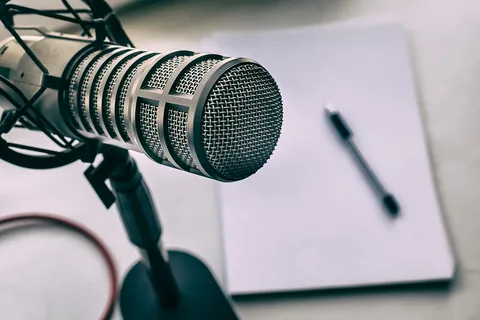It’s easy to start a podcast, but it’s much more difficult to keep it going on a consistent basis. Just keep in mind that it will be difficult, that editing will take time, that you will make mistakes while recording, and that guests will drop out at the last minute.
Your podcast will be the most rewarding thing you’ll ever do if you have backup plans in place and are willing to keep producing podcasts even if your listenership drops.
By asking that question, I’m assuming you have a topic in mind for a podcast. If you don’t, consider what you’re passionate about and whether you can talk about it once a week. Then you can get started.
Brief Guide to Start your First Podcast
Here’s what you’ll need to get started.
Format – Think about the topics you’d like to cover, the format of your discussions, and what category your podcast content falls into.
Platform – Choose a podcast hosting platform where your episodes can be easily shared or downloaded.
Artwork – Create a cover image and a description that sells your podcast.
Gear – Obtain the necessary podcasting technology and equipment, such as a computer, microphone, headphones, and a high-speed internet connection.
Workplace – Find a good recording location that is free of noise and other distractions.
Podcasting Gear: List of Equipment to Start your Podcast
So you have a subject for your podcast. Now you need to do some things.
Create a title for your show.
Make a logo. It’s your brand identity.
Invite a co-host or co-hosts (One is good, two is better)
Schedule Your Show: Determine whether the show will air daily, weekly, or biweekly.
Sign up for a free account with WordPress, Libsyn, Buzzsprout, or any other podcast hosting service.
Make a website for your podcast.
Download and install Audacity on your computer.
Get a high-quality USB microphone for yourself and your co-hosts.
Remote Guest Should have Same Mic: If your co-hosts are remote, they will need to get their own microphones, but they should be the same as you.
Create a Skype or Google Hangouts account (you’ll need it eventually).
I recommend a digital recorder to record and mix your voices and music similar to the Zoom H5 or a multi-track recorder.
You can record directly to Audacity, but there are some drawbacks to doing so.
Create your show script/topic list in Google Docs and share it with your co-hosts. Adhere to it.
Prepare your show notes ahead of time so you know what you’re going to talk about. Insert these notes into your Google Doc.
Make a recording of your show. Begin recording a few minutes before the actual introduction and end about a minute after the “good bye.”
Check to see if you’re actually recording. Is the record light turned on?
Examine your levels!!
Always wear headphones.
Start editing your recorded file by importing it into Audacity.
Export your completed and edited MP3 file.
Upload the MP3 to your podcast hosting service.
Make Notes of Shortcomings: Make your show shortcoming notes while listening to your own podcast, to make it better in future.
Put your podcast out there or publish on the appropriate platform.
Share on your social media accounts
Some Useful Tips to make Podcast Best for listeners
You can follow the following guidelines to start record, edit podcast on laptop or other desktop computer system.
- You should buy the best equipment you can afford. My favorite microphone is the Audio Technica AT2020.
- At least 10 dummy episodes should be recorded before you publish your first. You need to get used to your equipment.
- Listening to yourself is odd at first and you need to get used to it.
- Put more enthusiasm into your delivery and speak more clearly than usual.
- Be consistent. It’s the most important rule for you. Keep to your schedule no matter what. On a certain day, your audience will expect your content and you need to deliver it.
- There’s something to say about this, even if it seems obvious. Don’t just start a podcast and see how it goes.
- If you are unsure about laptop selection then check this post for FAQs.
Conclusion
It takes a lot of prior planning. You must decide what your “win” will be. If you know why you want to start a podcast and what gap you want to fill with your content, all that remains is to order a good microphone and pay for hosting.
You’ll need a promotion strategy because no one will listen if they don’t know about it. Pat Flynn is a great person to follow because he has a lot of advice on how to start a podcast. We used many of his ideas and strategies to get our new podcast, One Next Step, off to a good start.


